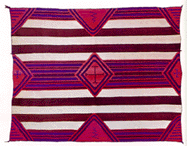Textiles of historical significance need to be considered as an artifact,
an investment, and art...

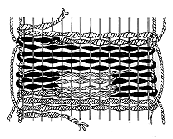 |
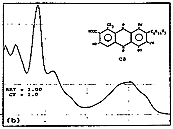 |
Textiles of historical significance need to be considered as an artifact, an investment, and art. Research into your textiles is like having gold that you own or may be buying assayed, or taking out title insurance on valuable property. You have information that is usually based on art history, and subjective opinion. Many experts do know a lot, enough to give a lecture on the subject, but other "experts" are good at elaboration and speculation. What reliability you do have is easy to confirm with these investigative instruments, and more importantly you will probably learn things about your weaving you did not know before.
Many times there is new information from the testing that will even help the scholar and well read collector be more objective about their information or knowledge base. I have seen this happen with museum curators, authors of books on the subject, and seasoned dealers. I can safely say as do many other people who study the subject: Textiles are commonly misrepresented because there is no objective testing associated with them. What are the dyes and fibers in your textile? - Natural and synthetic dyes can not be determined visually by the color or they are frequently miss-identified.
We can identify South American madder from Asian madder in Oriental textiles and Armenian cochineal from American cochineal that may occur in Oriental and Navajo weavings. The possibility of raveled yarn from oriental textiles being used in Navajo textiles has been written about by Joe Ben Wheat.
These yarns would likely contain Armenian cochineal. You do not know until you have it tested! Lac has also been found raveled side by side with synthetic dyes from 1885.
Certification of Navajo or any kind of textiles is accomplished using a scientifically based methods and instrumentation called High Pressure Liquid Chromatography (HPLC) and a computerized Photodiode Array (PDA) detector coupled with a computerized Spectral Library to analyze the dyes and photo- microscopic evidence to analyze the yarns and fibers. These are scientifically based well established, reproducible, and reliable methods. See Methods
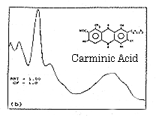 |
The museums mentioned above do not use HPLC or PDA analysis with these standards, but a Ph.D. in biochemistry, Dr. Jan Wouters does use HPLC and he has published extensively on dye analysis. Dr Wouters does not have this collection of dye standards, but his natural dye standard collection is very extensive. This laboratory uses the same standard at the Smithsonian Institute in Washington D.C and the J. Paul Getty Museum. Material Insight has added the Navajo Natural dye category with the HPLC and PDA method of testing. The dye standard collections include:
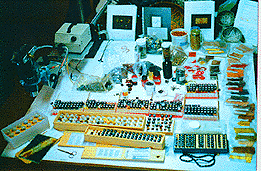 |
84 large samples or fragments of historic textile materials for comparisons or dye testing of antique dyes
47 samples of important dye plants and dye insects
66 samples of pure natural dyes and dye components
51 samples of naturally dyed materials from Indonesia
70 samples of early 1856-1892 synthetic dyes in pure form - 5 after 1900.
70 samples of early 1856-1892 synthetic dyes on wool bundles - 5 after 1900.
50 samples of plant and dyed yarns from Navajo weavers using natural dyes.
We have several hundred computerized spectra files in several computerized and printed libraries to compare dyes and dye components found in any given sample. We are able to give a mathematical readout of spectra contour and symmetry match characteristics, as well as print-out of over-laid spectras from the sample and dye standards as evidence of dye identification. It is very important to remember that these synthetic dyes, natural dyes, and pure dye components all include researchable Color Index (CI) numbers, generic names, dates of invention or patent, as well as Latin species names for insects and plants. The first one volume Color Index was issued in 1900 in Germany with hundreds of dyes. The current Color Index has nine volumes and thousands of dyes and pigments. We have all the "historically significant natural and synthetic dyes." (personal conversation. Helmut Schweppe, 1993).
 |
Each textile is rich with information. We make surgical like 2mg to 4mg invisible extractions with a microscope when preparing samples for dye analysis. (See Methods) When necessary, we separate (Z or S spun) raveled flannels to test for different flannel use. In the past, dye analysis found Lac and Cochineal in one yarn that may well have been two different raveled flannel yarns dyed with different dyes and re-twisted together. Please see-or CLICK- the spectral data explanation above for more information. Natural yellow dyes can be separated from Indigo that make-up green dyes. Each dye and fiber contribute historical and ethnological information that can enhance what we know about a textile and verify a textile's place in history.
These valuable and historic art forms should have their representation supported with research stemming from empirical objective research. Even a seasoned expert's knowledge or best guess can be supported, corrected, or "tuned up" with objective research.
NOTE: We
specialize in Navajo blankets/textiles, but we have examined dyes, yarns,
and fibers from many Oriental, Guatemalan, Peruvian, Chiapan, and Indonesian
textiles - any textile can yield the same results.
Additional
Information:
mailto:infoMI@material-insight.com
Call Casey Reed at 505-344-8492
